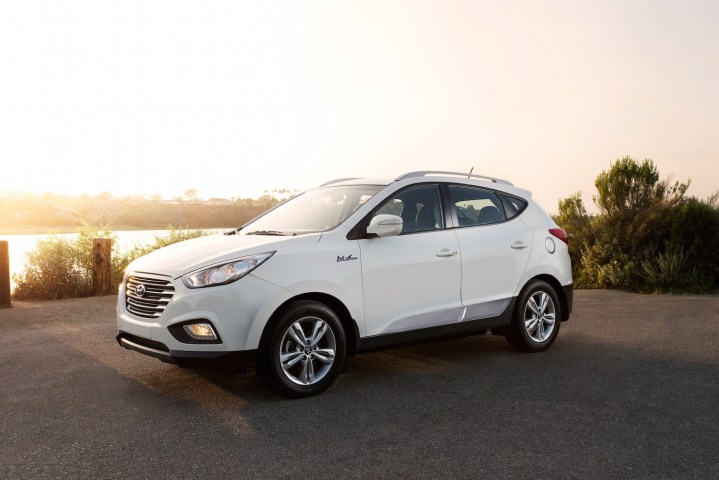
An earlier report in The Electronic Times that said Hyundai was aiming to extend the 265-mile driving range of the current FCEV vehicle to 497 miles, almost double. That report also said the new model will be introduced in late 2017 but would go into mass production in 2018. It will again be an SUV, like the current Hyundai Tucson Fuel Cell model. In addition to the popularity of SUVs, FCEV components take a lot of space and SUVs have more space available than the FCEV sedans made by Honda and Toyota.
The Hyundai Tucson Fuel Cell, introduced in 2013, was the first FCEV to be mass-produced, but it is still being made in small quantities. The production is limited to 1,000 vehicles a year and it’s not clear if it has reached those goals. The two greatest reasons sales haven’t been greater are high cost and the limited availability of hydrogen refueling stations.
The Tucson Fuel Cell has never been for sale, only for lease, with no lease-purchase option at the end of the term. The lease requires a $3,000 payment upfront and $500 a month for 36 months. As part of the lease, fuel and maintenance are included, along with a permit to drive in High Occupancy Vehicle (HOV) lanes on the highway.
The only places in the U.S. where FCEV Tucsons are available to lease are in specific parts of northern and southern California. There are currently only 5 hydrogen fueling stations in the northern part of the states (in Hayward, San Francisco, and near San Jose). There are 16 stations hydrogen stations in the Los Angeles area, as far south as Dana Point. With the current model the 265-mile driving range isn’t enough to make the 383-mile trip from San Francisco to Los Angeles, so all driving with the current vehicles are limited to their own sections of California.
In order for prices to go down, permitting an increase in leases, the FCEVs will need to be produced in greater quantities. And while wider distribution is needed to support more customers, that in turn requires more refilling stations. So even though hydrogen fuel cells are the most eco-friendly fuel system on the road — water is the only emission — the chances of more FCEVs getting off the starting block depend on successful efforts on both fuel availability and lower prices.



